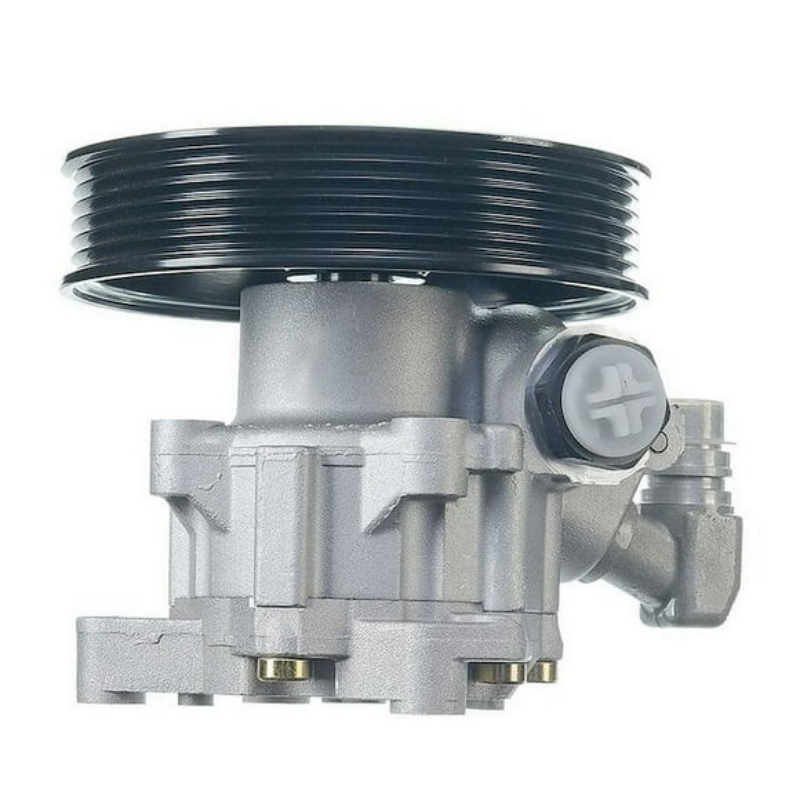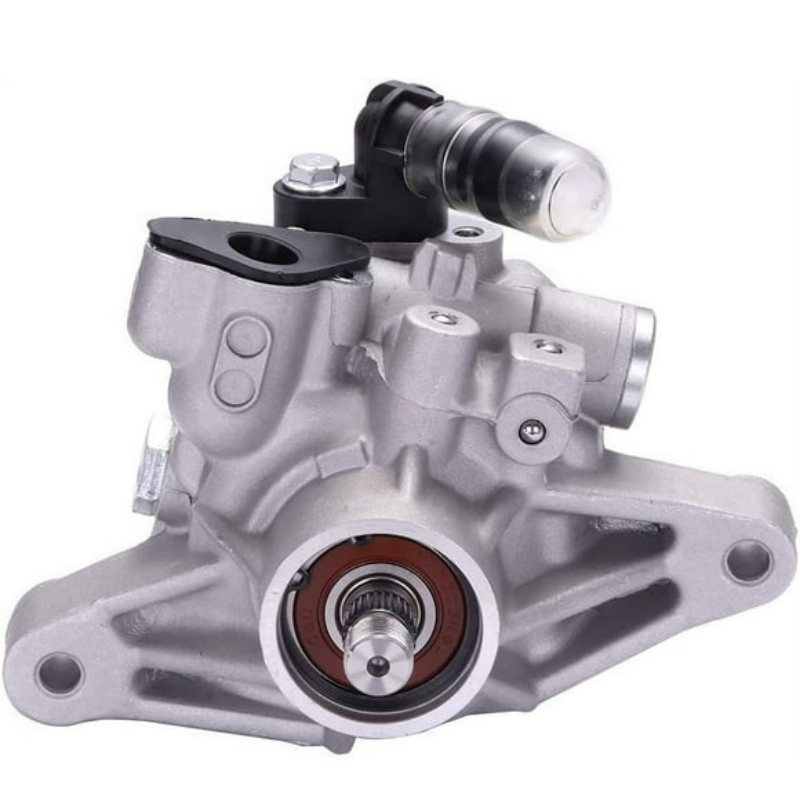Understanding Power Steering Malfunction in Mercedes Vehicles
When owning a luxury vehicle like a Mercedes, maintaining its impeccable performance is essential. Among the many systems that contribute to a smooth driving experience, the power steering system stands out as one of the most crucial. A power steering malfunction in a Mercedes can not only lead to an uncomfortable driving experience but can also pose serious safety risks. Understanding the signs and symptoms of power steering malfunction, the causes behind these issues, and the steps for remediation will empower you as a car owner. In this article, we will delve deep into the topic of power steering malfunction in Mercedes vehicles. We will explore everything from common indicators of trouble to necessary maintenance tips, troubleshooting techniques, and repair options, ensuring that you have a comprehensive understanding of this vital component of your beloved car.

The Importance of Power Steering Systems
Power steering has become a standard feature in modern vehicles, including all models manufactured by Mercedes. It aids drivers in steering with minimal effort while improving vehicle control, making driving safer and more enjoyable. Unlike manual steering, which can be heavy and cumbersome, power steering utilizes hydraulic or electric actuators to provide assistance, making navigation in tight spaces or during low-speed maneuvers much easier.
A malfunction in this system not only hinders performance but can also lead to increased wear and tear on components. Thus, understanding how power steering systems work is crucial for identifying and addressing issues as they arise. Mercedes vehicles typically come equipped with sophisticated power steering systems. Some models utilize hydraulic systems, while others employ electric steering technology. Each system has its advantages, but they also have common problems that drivers should be aware of.
Common Symptoms of Power Steering Malfunction
Identifying a power steering malfunction early can save you from extensive repairs and safety hazards. Here are some common symptoms that indicate an issue with the power steering system in your Mercedes:
- Difficulty Steering: One of the most apparent signs of power steering malfunction is difficulty in steering. If your steering wheel feels stiff or heavy, or if you struggle to turn your vehicle, it’s time to have your power steering system checked.
- Unusual Noises: Listen for whining or grinding sounds when you turn the steering wheel. These noises can signify that there’s an issue with the hydraulic fluid or that components are wearing out.
- Fluid Leaks: Fluid leaks underneath the vehicle can indicate a leak in the power steering fluid reservoir or hoses. Dark red or pink fluid spots on your driveway or garage floor shouldn’t be ignored.
- Warning Lights: Many modern Mercedes models have dashboard warning lights that alert the driver to power steering issues. Pay attention to any warning messages or lights indicating a malfunction.
- Vibration: If you notice vibrations in the steering wheel while driving, particularly when you are turning, it can indicate greater issues. This symptom may be coupled with unresponsiveness, making it essential to address immediately.
- Burning Smell: A burning smell, especially if accompanied by other symptoms, indicates overheating or other serious issues within the power steering system.
Causes of Power Steering Malfunction
Understanding the underlying causes of power steering malfunctions can help you prevent potential problems or react appropriately when they occur. Here are several factors that can contribute to a malfunction:
- Fluid Leaks: Over time, hoses and tubes connecting the power steering components can wear out or become damaged, leading to leaks in the steering fluid. Insufficient fluid can result in increased steering effort and damage to the system.
- Contaminated Fluid: Power steering fluid can become contaminated with dirt, debris, or moisture, resulting in reduced efficiency. Contaminated fluid can lead to internal damage and eventual system failure.
- Pump Failure: The power steering pump generates the pressure needed for the system to function. If it fails, steering assistance is lost. A variety of issues, such as leaks or worn bearings, can contribute to pump failure.
- Belt Issues: In hydraulic systems, the power steering pump is usually driven by a serpentine belt. If this belt is worn, frayed, or broken, it can hinder pump operation, resulting in a power steering malfunction.
- Electrical Issues: Electric power steering systems depend on working electrical components to function. A failed motor, wiring issue, or faulty sensors can result in loss of steering assist.

Diagnosing Power Steering Malfunction
If you suspect power steering malfunction, diagnosing the problem should be your first step. Taking a systematic approach can help identify the issue quickly and accurately. Here are steps involved in diagnosing potential power steering problems:
- Visual Inspection: Begin by checking for any obvious signs of a malfunction. Look for fluid leaks, check the condition of hoses, belts, and the fluid itself.
- Fluid Level Check: Examine the power steering fluid reservoir. If the fluid level is low, this could indicate a leak. Make sure to use the correct type of fluid specific for your Mercedes model.
- Listen for Noises: Turn the steering wheel while the engine is running and listen closely for any unusual noises. Whining sounds may indicate an issue, such as low fluid or a failing pump.
- Test Drive: Pay attention to how the vehicle handles. Notice if the steering effort is heavier than usual or if you have experienced any vibrations in the steering wheel.
- Scan for Error Codes: For electronic power steering systems, using an OBD-II scanner can help you identify error codes that may indicate specific issues within the steering system.
Maintenance Tips for Power Steering Systems
Preventive maintenance is key to ensuring the longevity of your Mercedes’ power steering system. Here are several tips to keep your power steering in peak condition:
- Regular Fluid Checks: Check the power steering fluid level regularly. Keep an eye on its color and consistency. If your fluid appears dirty or contaminated, change it immediately.
- Scheduled Fluid Changes: Consult your owner’s manual for recommendations on how often to change the power steering fluid. Generally, it should be replaced every couple of years to maintain system performance.
- Inspect Components: Periodically inspect hoses and belts for signs of wear or damage. Replace any parts that show signs of deterioration to avoid unexpected failures.
- Listen for Unusual Sounds: Make it a habit to listen to your vehicle while driving. Paying attention to noises can help you catch potential problems before they escalate.
- Immediate Action on Issues: If you notice any symptoms of power steering malfunction, do not delay seeking professional help. Addressing problems earlier can prevent more significant issues down the line.
Repair Options for Power Steering Malfunction
When diagnosing and troubleshooting power steering issues leads to the conclusion that repairs are necessary, several options may be available to you. Understanding these options ensures that you are prepared for the next steps.
- Fluid Replacement: If contaminated or low fluid is discovered, a simple replacement may solve the problem. Ensure that you use the manufacturer-recommended fluid for your model.
- Seal Replacement: If leaks are identified, replacing the necessary seals and hoses can remedy the issue before any critical components are damaged.
- Pump Replacement: In cases of pump failure, you may need to replace the power steering pump. This repair may require specialized tools and equipment, so it is best to consult a professional mechanic.
- Belt Replacement: If the power steering belt is worn or damaged, this may require replacement. A mechanic can help assess whether this is the case.
- Complete System Inspection: For more serious issues or persistent symptoms, you may need a complete system inspection. This examination can uncover underlying issues that need resolution for the system to function optimally.

Conclusion
Understanding power steering malfunction in Mercedes vehicles is vital for any owner looking to maintain the exceptional performance of their car. By recognizing the signs early, diagnosing the causes, and implementing effective maintenance practices, you can avoid many of the potential pitfalls associated with power steering issues. Regular checks, timely interventions, and professional repairs when necessary will enhance your driving experience and ensure your vehicle operates as intended. Ultimately, knowledge is power when it comes to vehicle ownership, and being informed about power steering malfunctions is part of ensuring the safety and reliability of your Mercedes.
